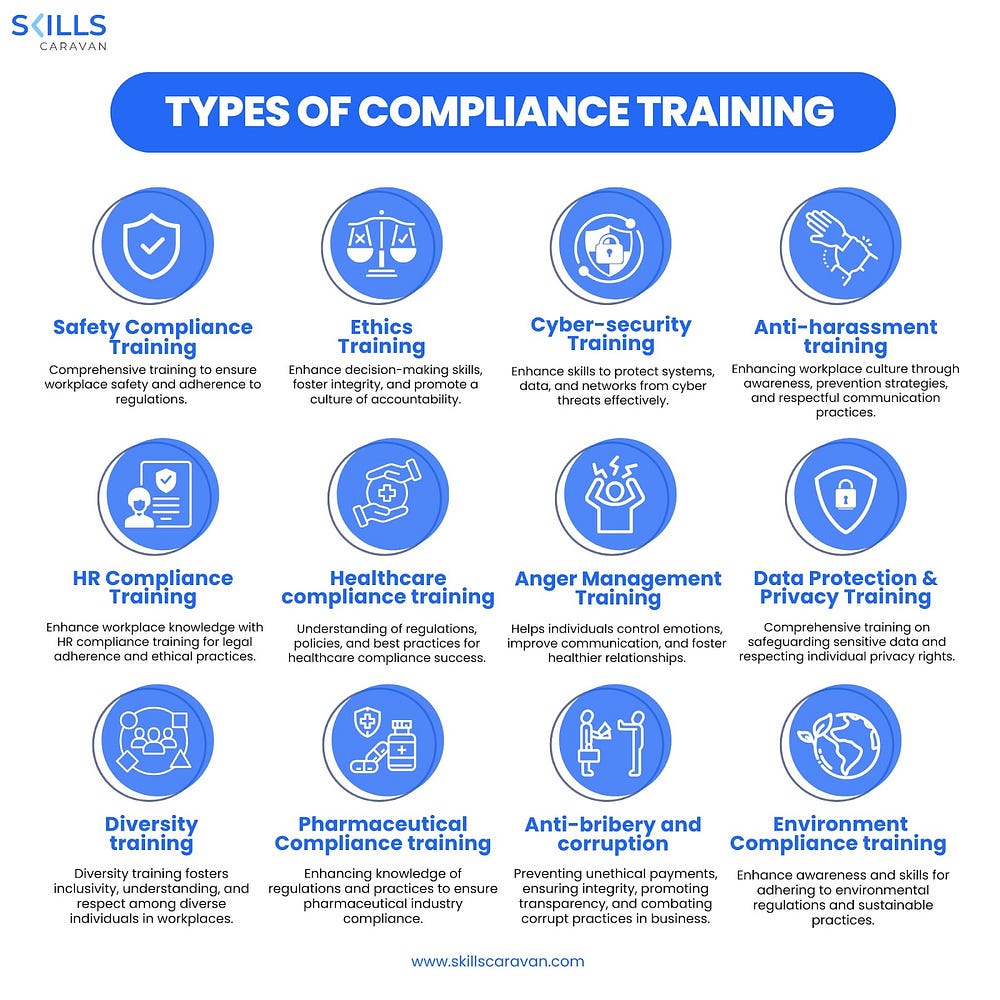How to Develop an Effective Compliance Training Strategy in 2025?
How to Develop an Effective Compliance Training Strategy in 2025?
In 2025, organizations across industries are rethinking how they approach compliance training. As regulations evolve, remote work reshapes workforce dynamics, and new technologies emerge, building an effective compliance training strategy is more crucial — and complex — than ever before.
This article explores practical, forward-thinking steps to design a compliance training program that protects your organization, engages employees, and adapts to the changing business landscape.

✅ 1. Understand the Purpose and Scope of Compliance Training
Before designing your compliance training, clarify what it needs to achieve. Beyond meeting legal requirements, effective compliance training should:
- Reduce risk of non-compliance and legal penalties
- Reinforce your organization’s ethical standards and values
- Equip employees to identify and respond to potential compliance issues
- Foster a culture of integrity and accountability
In 2025, compliance training isn’t just about ticking boxes — it’s about protecting brand reputation and building trust with customers, partners, and regulators.
🧠 2. Conduct a Comprehensive Training Needs Analysis
A data-driven training needs analysis is the cornerstone of an effective compliance training strategy. Here’s how to do it:
- Review past audit reports and compliance incidents
- Analyze risk assessments to identify high-risk departments or roles
- Gather employee feedback on current training gaps and preferred learning formats
- Consult with legal, HR, and compliance officers to prioritize topic
This ensures your compliance training content stays relevant and focused on real risks, rather than generic or outdated material.
📈 3. Align Training Goals with Business Objectives
Effective compliance training shouldn’t feel separate from your business strategy — it should support it. Identify how training goals tie into broader objectives, such as:
- Enabling safe expansion into new markets
- Strengthening data security and customer trust
- Preparing teams for industry-specific regulatory changes
- Promoting diversity, equity, and inclusion
In 2025, with ESG (Environmental, Social, and Governance) becoming central to corporate strategy, compliance training should also address ethical sourcing, sustainability, and social responsibility.
🎥 4. Use Modern Learning Methods to Drive Engagement
Traditional lectures and slide decks rarely keep today’s workforce engaged. Modern compliance training strategies should blend:
- Microlearning: Short, focused lessons fit into daily workflows
- Gamification: Points, leaderboards, and scenario-based quizzes
- Interactive video: Realistic situations that require employee decisions
- AI-driven simulations: Personalized learning paths based on employee role, risk exposure, and past performance
These methods transform compliance training from a passive activity into an immersive experience.
📲 5. Embrace Mobile-First and Flexible Delivery
With hybrid and remote work here to stay in 2025, compliance training must be accessible anytime, anywhere. Consider:
- Mobile apps for on-the-go training
- Bite-sized modules employees can complete between meetings
- Virtual instructor-led sessions with real-time Q&A
- Asynchronous options for global teams across time zones
Flexibility increases completion rates and helps employees apply compliance knowledge in real-world contexts.
🔄 6. Keep Content Current and Contextual
Regulations change rapidly. Build a process to:
- Review training content at least annually (or sooner after significant legal updates)
- Tailor training by department, region, and role
- Include recent case studies and industry examples to show why compliance matters
In 2025, employees expect relevant, up-to-date content that feels specific to their daily responsibilities.
📊 7. Measure Effectiveness with Clear Metrics
Don’t stop at tracking completion rates. Evaluate the impact of your compliance training through:
- Pre- and post-training assessments
- Surveys to gauge confidence in handling compliance issues
- Monitoring real-world compliance incidents and trends
- Benchmarking results against industry standards
Use these insights to refine your training strategy continuously.
🤝 8. Make Compliance a Leadership Priority
An effective compliance training strategy starts from the top. Senior leaders should:
- Participate visibly in training
- Share real stories of ethical decision-making
- Reinforce compliance expectations in team meetings and company communications
When employees see leadership’s commitment, they’re more likely to take training seriously.
🌍 9. Address Global and Cultural Diversity
For multinational organizations, compliance isn’t one-size-fits-all. Adapt training for:
- Local languages and cultural norms
- Country-specific regulations and laws
- Different ethical perspectives and workplace practices
This approach ensures your compliance training resonates across your global workforce.
🔒 10. Integrate Compliance Training into Onboarding and Beyond
Compliance shouldn’t only be covered once a year. Instead:
- Include core compliance modules in employee onboarding
- Provide refreshers tied to real-world events or policy updates
- Offer advanced modules for higher-risk roles
- Foster ongoing discussions in team meetings or newsletters
Continuous learning reinforces a culture of compliance.
🌟 Final Thoughts
In 2025, the best compliance training strategies go beyond regulatory requirements — they create a culture where compliance is part of daily decision-making.
By using modern learning methods, tailoring content to business realities, and measuring real outcomes, your organization can protect itself from risk, build trust, and empower employees to act with integrity.
As the regulatory environment and workplace continue to evolve, an adaptable, data-driven compliance training strategy will be your greatest asset.

Comments
Post a Comment